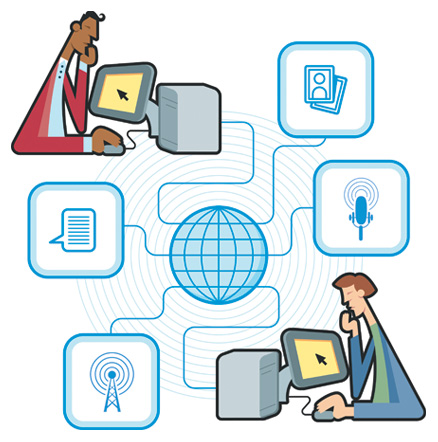 ack in Thomas Edison's day, the business world enjoyed what seemed like eons of time to adjust to newfangled gizmos and state-of-the-art services, like the radio and the telephone: 73 years passed after phones were first made available to the general public before half the country's households had installed one, and it took 32 years from the radio's initial introduction before half of American families were tuned in to the airwaves. With the technological revolution moving almost as slowly as a dial-up Internet connection, marketers felt no need to respond as if their horse-and-buggy world were being threatened by technological advances. ack in Thomas Edison's day, the business world enjoyed what seemed like eons of time to adjust to newfangled gizmos and state-of-the-art services, like the radio and the telephone: 73 years passed after phones were first made available to the general public before half the country's households had installed one, and it took 32 years from the radio's initial introduction before half of American families were tuned in to the airwaves. With the technological revolution moving almost as slowly as a dial-up Internet connection, marketers felt no need to respond as if their horse-and-buggy world were being threatened by technological advances.
For example, merchants took a marketing siesta lasting almost three full decades before they figured out customers could use the telephone to make nighttime orders after reading advertisements for new products in the evening paper. And it took companies almost 20 years before one aired the first official radio commercial - for a New York apartment complex - in 1922. Industries across the spectrum had missed boarding the marketing boat for these new technologies, probably because they thought they had all the time in the world to adjust to them.
Once upon a time, perhaps they did. But today, the tempo of technological change for Web 2.0 tools is moving faster than you can speed through commercials on TiVo. It took only 12 years for 50 percent of Americans to buy a cell phone, and just 10 years for half to start surfing the Net. But even that pace, warp speed by 19th- and 20th-century standards, is slower than snail mail when it comes to Web 2.0. The slew of interactive, customer-centric sites and techno tools have covered the Earth in less time than it takes to download an MP3.
These modern-day marketing instruments are rapidly
making the way your company used to promote your
program and communicate with customers look as old-fashioned as sandwich boards and Burma Shave signs.
That's why, in part two of Trade Shows 2.0, we look at
three more Web 2.0 tools - YouTube, business blogs,
and virtual trade shows - to help you stay one step ahead of the curve - and the competition.
|





 ack in Thomas Edison's day, the business world enjoyed what seemed like eons of time to adjust to newfangled gizmos and state-of-the-art services, like the radio and the telephone: 73 years passed after phones were first made available to the general public before half the country's households had installed one, and it took 32 years from the radio's initial introduction before half of American families were tuned in to the airwaves. With the technological revolution moving almost as slowly as a dial-up Internet connection, marketers felt no need to respond as if their horse-and-buggy world were being threatened by technological advances.
ack in Thomas Edison's day, the business world enjoyed what seemed like eons of time to adjust to newfangled gizmos and state-of-the-art services, like the radio and the telephone: 73 years passed after phones were first made available to the general public before half the country's households had installed one, and it took 32 years from the radio's initial introduction before half of American families were tuned in to the airwaves. With the technological revolution moving almost as slowly as a dial-up Internet connection, marketers felt no need to respond as if their horse-and-buggy world were being threatened by technological advances. 








